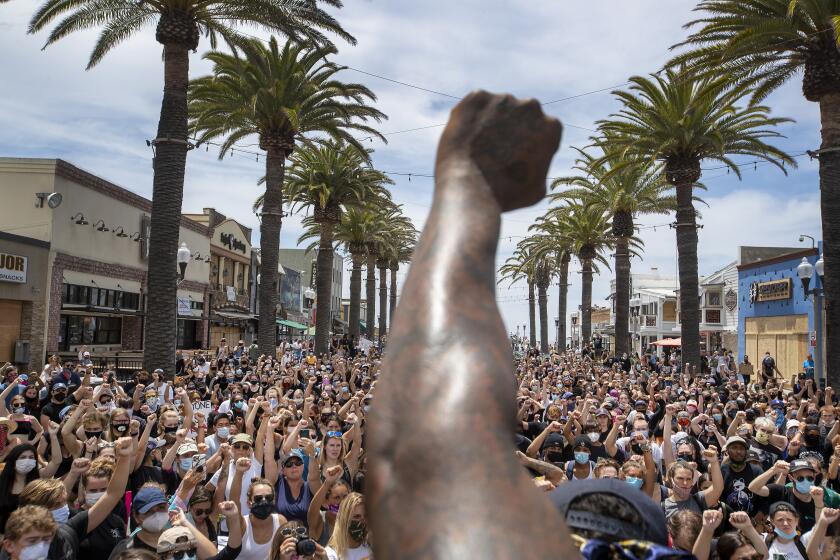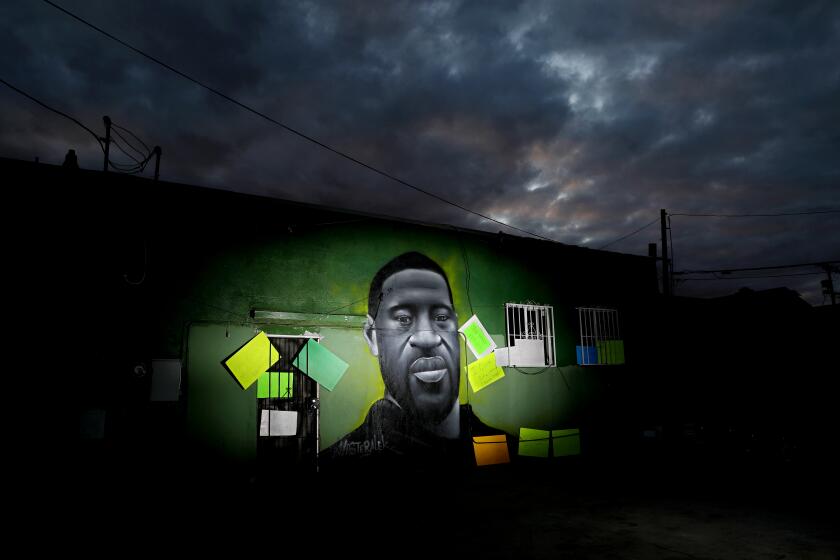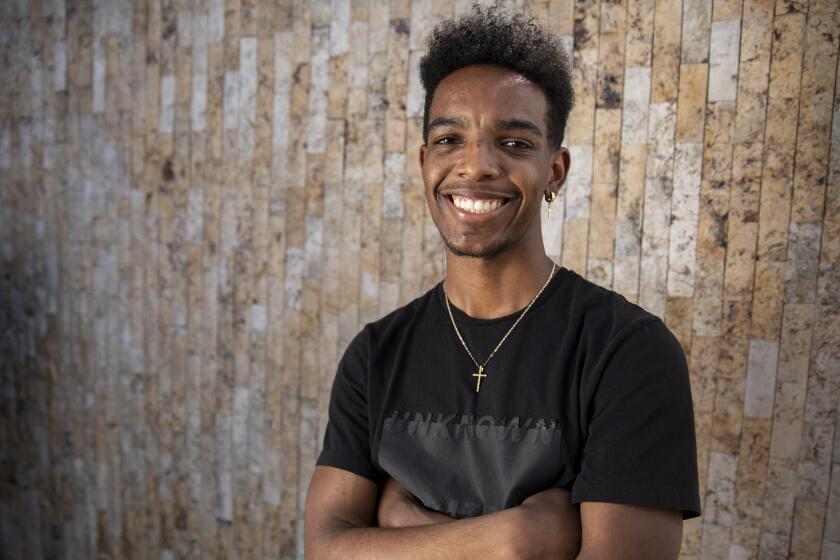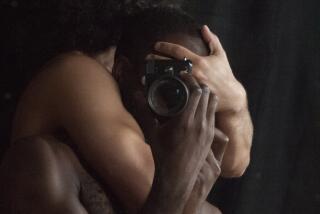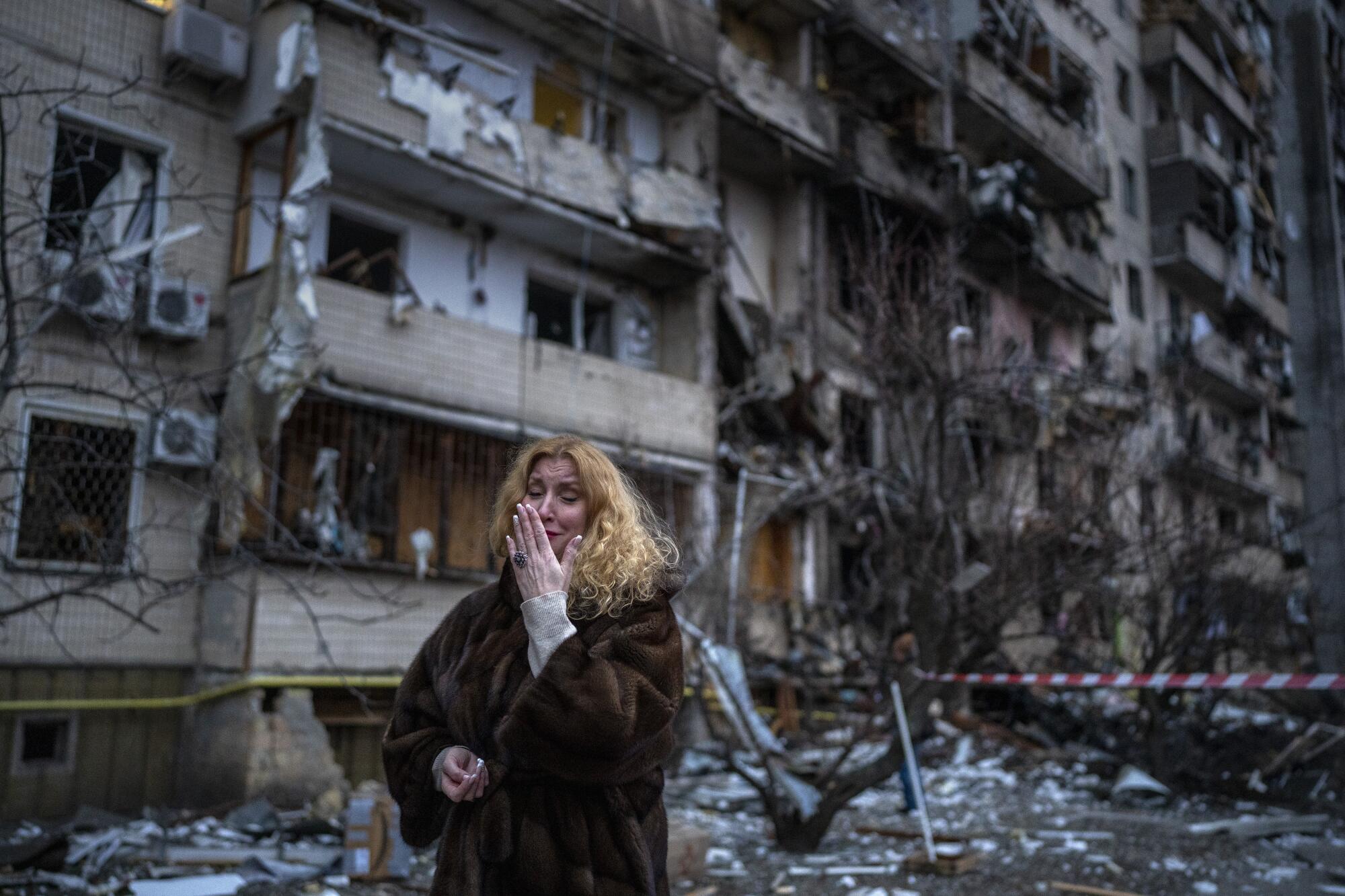
- Share via
On the Shelf
'Through the Lens: The Pandemic and Black Lives Matter'
By Lauren Walsh
Routledge: 142 pages, $25
If you buy books linked on our site, The Times may earn a commission from Bookshop.org, whose fees support independent bookstores.
Lauren Walsh’s “Conversations on Conflict Photography” was published in October 2019. A series of interviews with photojournalists, the book focused primarily on questions about photographing overseas conflict of the kind that is dominating the news with Vladimir Putin’s revanchist invasion of Ukraine.
Walsh’s latest book deals with the more unconventional convulsions of the last two years. In 2020, it became clear that the COVID-19 pandemic and that summer’s massive protests surrounding the death of George Floyd had produced a whole new set of dilemmas for photojournalists. Walsh’s follow-up, “Through the Lens: The Pandemic and Black Lives Matter,” continues her project of probing the processes behind the images that appear on our front pages.
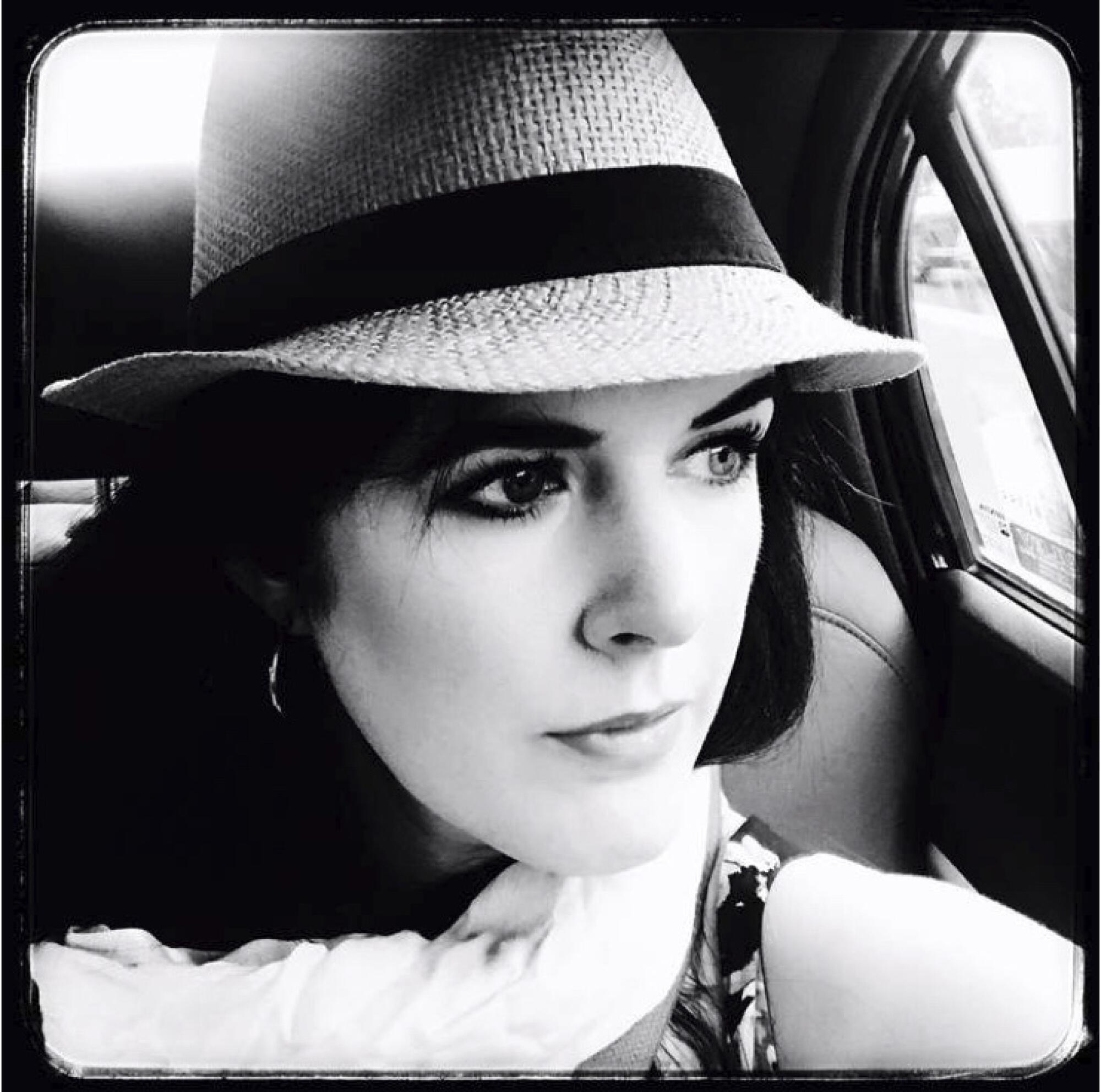
For a field still dominated by white men, “Through the Lens” brings a refreshing diversity of voices to a set of questions around privacy and consent, the role of captions, graphic imagery and censorship. Walsh, who teaches the ethics and history of photojournalism at the New School and at New York University, has more recently been spending anxious days in contact with photographers stationed in Ukraine. She spoke to The Times about how photojournalism has changed and its role in what promises to be another long and brutal conflict.
Your previous book dealt with conflict photography, so I have to start by asking what you’re hearing from colleagues in Ukraine. What should we keep in mind with regard to the images coming out of that conflict? And what dangers are photographers facing there?
The lead-up to the invasion revealed various ways Putin was willing to employ disinformation, including faked visuals, to justify incursion. This is a scary reminder of how powerful visuals can be. So at a minimum, viewers should be careful to receive their news imagery from credible sources. I’m seeing lots of images on Twitter, sometimes from sources I know and trust. Other times, they’re retweets that can temporarily satiate that “need to know now” feeling, but if they’re uncredited, I don’t know if they’re real or accurate or part of a political agenda. Disinformation is ever more frequently a tool of warfare; understanding that is crucial.
As for the photojournalists on the ground in Ukraine, it goes without saying that any time one is in a conflict zone, there will be safety hazards. Missiles, shrapnel, explosions — the dangers are real. And Russia is incredibly advanced in cyber capabilities and could be monitoring journalists. The phones we use give off our locations. Journalists should be savvy about all this.
I’m also hearing that panicked Ukrainians are, in cases, harassing or assaulting photojournalists. It’s an anti-West sentiment, a “you let this happen” take on things. And while I have not, one day into the invasion, heard that Russian military is targeting media, watchdog organizations are concerned for all media and especially for local press and fixers. The worry is that there could be retribution if they’re picked up by Russian forces.
Transportation is another serious concern. Buses are shutting down, airports are being taken over, trains are moving targets, and I know of very few journalists who are getting around in armored cars. A day into the invasion, I haven’t heard of any major injuries sustained by photographers, but if that happens, they need treatment and, ideally, evacuation immediately.
These are all concerns that photographers, as well as their editors, are grappling with. One photo editor told me in the hours before the invasion began, “Twitter is freaking me out. This feels like the end of the world.” It speaks to the acute stress and anxiety. But journalists take on all of this because a world without documentation or independent reporting, a world where state-promoted narratives dominate, is a whole other level of danger.
Walter Mosley, Luis Rodriguez, the coiner of #BlackLivesMatter and others sketch a hopeful future for L.A. and the U.S. after George Floyd protests.
Your new book stands in contrast to such combat situations, but even in covering protests and a pandemic, photographers faced many dangers.
2020 witnessed a massive spike in attacks against American journalists. One of the major issues was the vitriolic rhetoric toward the media throughout the Trump presidency, which contributed to it being such a dangerous year for journalists — particularly journalists of color.
In the book, Danese Kenon, director of video and photography for the Philadelphia Inquirer, talks about one single day, during coverage of George Floyd protests, when there were three separate incidents where her photographers were attacked or robbed. There was also a great deal of censorship globally. The pandemic provided an easy excuse to censor journalists.
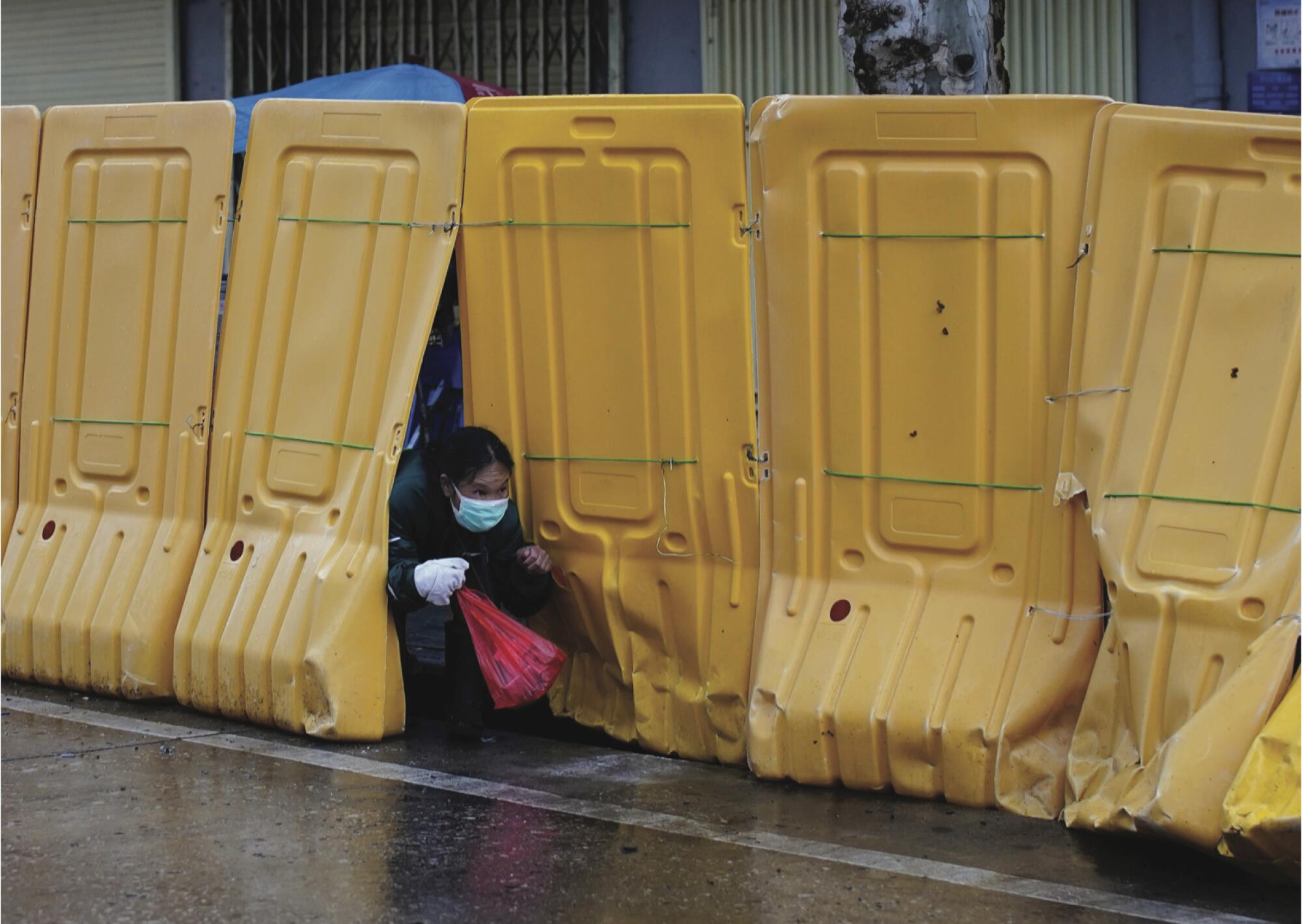
How did that play out in different countries?
In countries like Peru and China, there were various forms of controlling the media. One of the people I interviewed, Aly Song, who is a staff photographer for Reuters and covered Wuhan, had his SD card reformatted by police — his images were lost.
Was this different in America?
Photographers did complain of not being able to access hospitals, though some of that was due to privacy laws. But during the pandemic, the government relaxed certain privacy regulations while still holding fast to the media constraints. And in the long run, people did ask if it made a difference that we weren’t often seeing the more graphic images in hospitals. Would the severity of the virus have been taken more seriously by a broader public if there were more of those images early on?
It’s a difficult tightrope to walk, I imagine, because there are a lot of thorny questions about consent. And not just the victims of COVID-19 and their families — many of the people at protests did not want to be photographed, which feels like a newer problem.
The United States has an incredible and proud tradition of public protest, much of which comes to later generations through the photojournalism of the time. In 2020, we had the largest protests in U.S. history, but for the first time, photographers covering demonstrations routinely faced questions like: Should you show the faces of the people at these protests? People who’ve purposefully gone out in public with the intent to use their own bodies to make a statement? How do you be a witness to history while also not being dismissive of the wishes of the people on the ground?
What most Californians will remember about summer 2020 will be George Floyd and the protests over racial injustice. But will the movement survive?
This change seems to be driven by the increased use of surveillance technologies, such as facial recognition software, that allow authorities to identify protesters.
Right, these concerns grow from the perceived threat of surveillance. What this means for photojournalists is twofold. First, although you have the legal right to photograph in public, do you alter the way you work to prioritize the privacy of individuals? And second, photographs that show faces and eyes can be extremely emotionally compelling, so what does it mean for your documentation of something historically significant if you don’t capture faces?
There are photographers who are increasingly open to other ways of framing the picture. One photographer in the book, Nina Berman, made a photograph of a protest where you see a large crowd, but only from behind.
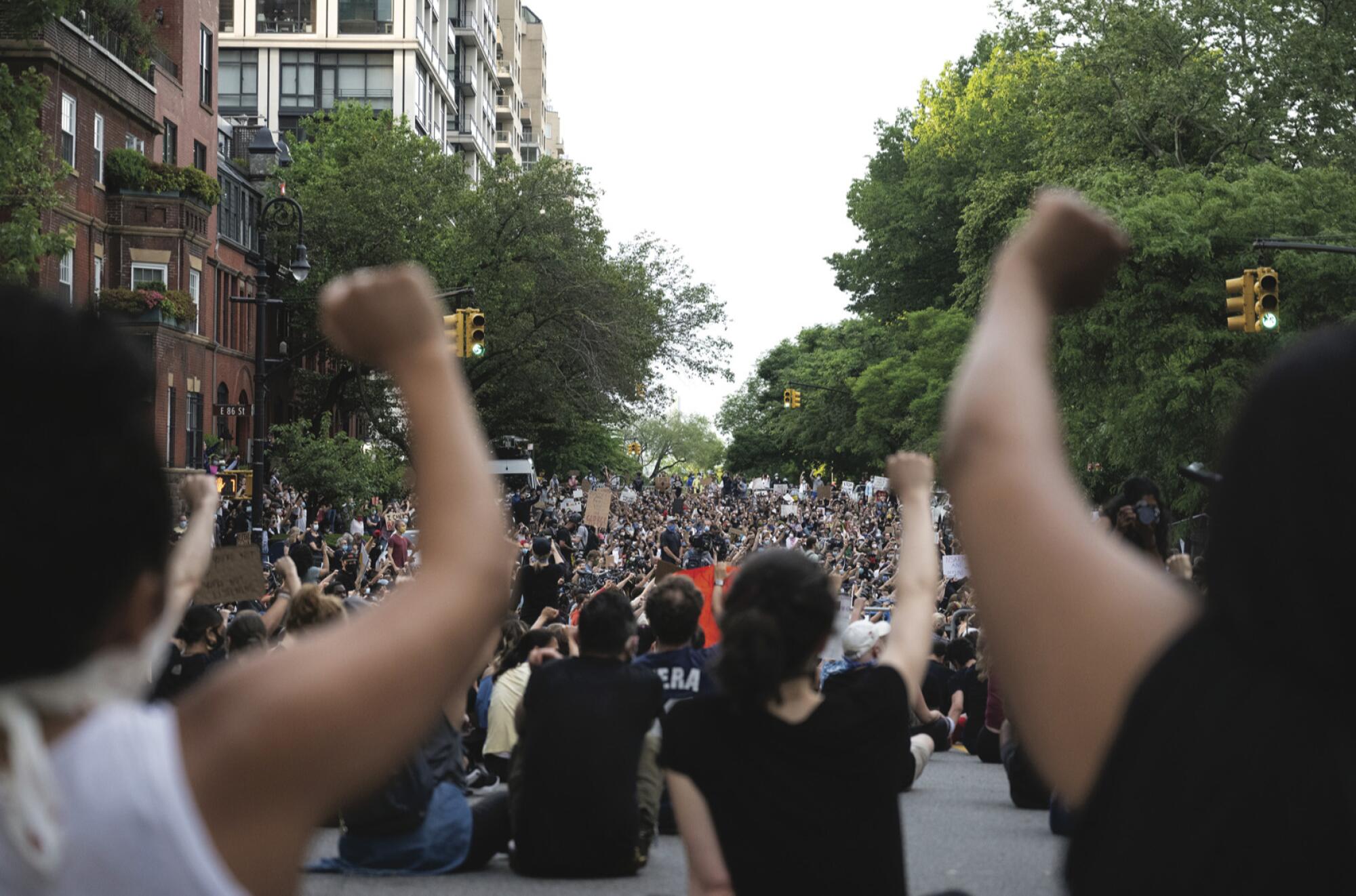
Berman talks about this in the book: “Most protests are choreographed performances, anyway. To think that all of these moments exist unscripted is not really to accept the reality of how these events operate.”
The job — as it is broadly understood — is to be a witness to events as they occur. To be the proverbial fly on the wall. What Berman is referencing is that protests are there as spectacle. They exist, in part, for the cameras. To recognize this, she suggests, means that photojournalists’ work isn’t diminished — even if there is a loss of some spontaneity because the photographer reacts to protesters’ requests by finding alternative ways to document.
Systemic racism is hard to visually represent. It can be much harder to show, say, housing discrimination in a single photograph than it is an overturned police car on fire. Did you see these photojournalists working to address this tension?
This is a major concern of a field called “peace journalism.” Photographer Patience Zalanga highlights this, asking us to not just look at spectacle but also the quiet moments surrounding things like Black Lives Matter. She has a beautiful image of a father reading with his son on a public bench. The two are reading a book they picked out together from a free library at George Floyd Square. As Zalanga explained to me, “It might be a moment you would otherwise pass by, but this is an image that challenges the usual perceptions of Black men, particularly in this space that memorializes the violent death of a Black man. This is a tender, quiet interaction, and I hope it deepens the context.”

Dickey is the author, most recently, of “The Unidentified: Mythical Monsters, Alien Encounters, and Our Obsession With the Unexplained.”
One year since the murder of George Floyd, which led to massive social justice protests nationwide, Angelenos reflect on the work that remains.
More to Read
Sign up for our Book Club newsletter
Get the latest news, events and more from the Los Angeles Times Book Club, and help us get L.A. reading and talking.
You may occasionally receive promotional content from the Los Angeles Times.
